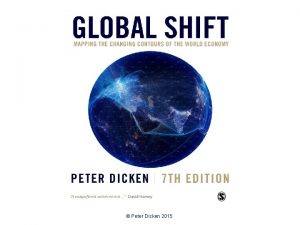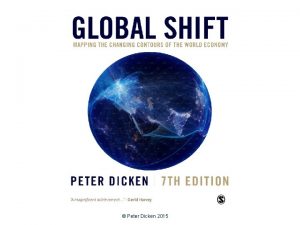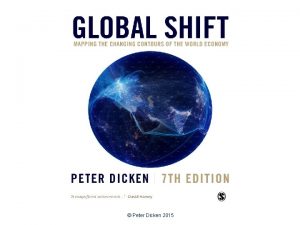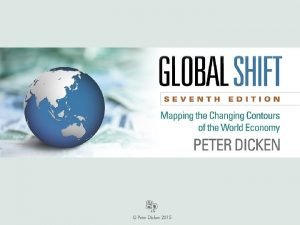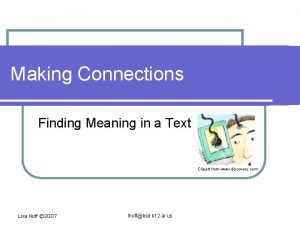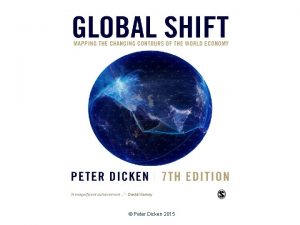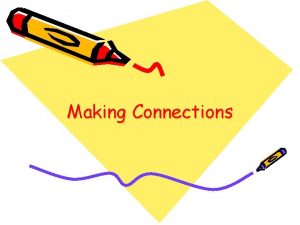Peter Dicken 2015 Making the Connections Moving the







- Slides: 7

© Peter Dicken 2015

‘Making the Connections, Moving the Goods’: Logistics and Distribution Services Global Shift Chapter 17

Review • Concepts to Review – Transport and communications technologies, resource extraction, buyer-driven industry, clothing, agro-food and automobile industries, key nodes • Key Words – Distribution, business-to-business/business-to -consumer delivery, RFID, e-commerce

Logistics and Distribution: Definition and Structure • Nature of the Industry – Intermediate between buyers and sellers – Involves complex flows of both goods and information across vast distances – Obstacles, political and physical, provide barriers to movement • Globalization of the Industry – – Getting things from point to point is a fundamental problem Growth of logistics market related to growth of economy System is driven by the consumer Lean production stimulates lean systems of distribution

Traits and Trends • Industry Players – Transportation companies, logistics service providers, wholesalers, trading companies, retailers, e-tailers • The boundaries between these are slippery • Consolidation of the Industry – Trend towards consolidation and concentration through acquisition/merger – Different types of logistics companies • traditional transportation and forwarding • asset-based logistics providers • network-based logistics providers • skill-based logistics providers

IT and Logistics/Distribution • Technology – – Time is the basis of competition Three key elements • • electronic data interchange bar code systems and RFID distribution centres E-commerce – Two types dominate • • – – – business-to-business-to-consumer Rise of ‘infomediaries’ Different types of shipment models The Internet is difficult to regulate

Retailers and the State • Role of the State – Regulatory systems provide a significant obstacle to logistics – Try to protect domestic retail markets – Regional economic blocs (e. g. EU, NAFTA) remove obstacles to distribution • Retail Industry – Strong domestic orientation • sourcing is increasingly global – Acceleration in transnational activities – Transforms retail supply and logistics networks
